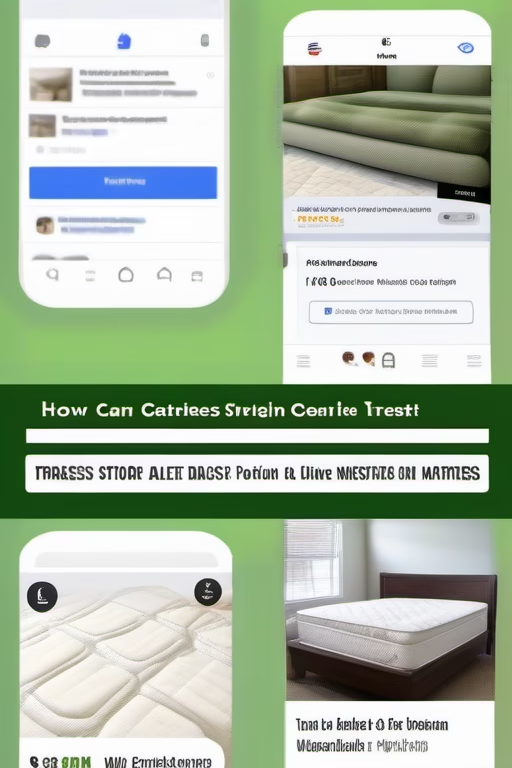How to Sell More Fitness & Gym Memberships with SEO: Local Marketing Tips
Your Local SEO Playbook by Market Wiz
Table of Contents
- Introduction: Why SEO Powers Gym Growth
- 1. Defining Your Ideal Gym Member Personas
- 1.1 Busy Professionals & Executives
- 1.2 Health‑Focused Parents
- 1.3 Seniors & Active Aging Demographic
- 1.4 Fitness Enthusiasts & Athletes
- 2. Highlighting Key Gym Offerings
- 2.1 Membership Packages & Trials
- 2.2 Group Classes & Virtual Sessions
- 2.3 Personal Training & Specialized Programs
- 2.4 Wellness Add‑Ons: Nutrition & Recovery
- 3. Crafting a Compelling Value Proposition
- 4. On‑Page SEO Fundamentals
- 4.1 Targeted Keyword Research for Gyms
- 4.2 Service Page & Class Page Optimization
- 4.3 Schema Markup for Fitness Businesses
- 5. Local SEO & Google My Business
- 5.1 Optimizing GMB for Gym Keywords
- 5.2 Local Citations & NAP Consistency
- 5.3 Managing & Responding to Reviews
- 6. Content Marketing & Community Engagement
- 6.1 Blogging: Workouts, Nutrition & Success Stories
- 6.2 Video Tours & Class Previews
- 6.3 Local Partnerships & Event Coverage
- 7. Paid Advertising & Retargeting
- 8. Referral Programs & Member Retention
- 9. Tracking Metrics & Continuous Improvement
- Conclusion & Next Steps
- 25 FAQs
- 25 Extra Keywords
Introduction: Why SEO Powers Gym Growth
With most gym‑seekers researching facilities online, appearing at the top of local search results is vital. Effective SEO not only drives qualified traffic to your site but also nurtures trust with prospects who value convenience, credibility, and community. In this guide, Market Wiz reveals proven local SEO tactics to amplify your fitness center’s visibility, attract ideal members, and boost enrollment rates.
1. Defining Your Ideal Gym Member Personas
1.1 Busy Professionals & Executives
Target keywords like “corporate gym membership” and “24-hour gym near me.” Highlight express circuit training, flexible hours, and business‑center amenities.
1.2 Health‑Focused Parents
Parents search “family‑friendly gym” and “childcare at gym.” Emphasize kids’ programs, clean facilities, and nutritional workshops.
1.3 Seniors & Active Aging Demographic
Optimize for “senior fitness classes” and “low‑impact workouts.” Showcase specialized equipment, wellness seminars, and supportive coaching.
1.4 Fitness Enthusiasts & Athletes
Use terms like “powerlifting gym” or “HIIT class near me.” Promote high‑performance training zones, certified coaches, and competition preparation services.
2. Highlighting Key Gym Offerings
2.1 Membership Packages & Trials
Create dedicated pages for monthly, annual, and trial passes. Include clear pricing tables, benefits breakdown, and call‑to‑action buttons like “Start Your Free Week.”
2.2 Group Classes & Virtual Sessions
Optimize class descriptions—“yoga for beginners,” “spin class schedule”—with calendar embeds and instructor profiles to improve engagement and SEO.
2.3 Personal Training & Specialized Programs
Detail certifications, success stories, and program durations. Target “one‑on‑one personal training near me” and “weight loss coaching.”
2.4 Wellness Add‑Ons: Nutrition & Recovery
Promote smoothie bar, recovery lounge, and nutrition counseling. Use keywords like “gym with juice bar” and “post‑workout recovery services.”
3. Crafting a Compelling Value Proposition
Your UVP should merge tangible outcomes—“burn 500 calories in 30 minutes”—with emotional appeals: community support, expert guidance, and real member transformations. Highlight flexible contracts, no‑risk trial periods, and transparent pricing to overcome objections.
4. On‑Page SEO Fundamentals
4.1 Targeted Keyword Research for Gyms
Leverage tools like Google Keyword Planner to uncover local search terms: “fitness center [city],” “gym membership deals,” and long‑tails like “best women’s only gym near me.”
4.2 Service Page & Class Page Optimization
- Use primary keywords in title tags, H1s, and meta descriptions.
- Write 600–1,000‑word pages with detailed class schedules, instructor bios, and member testimonials.
- Include images with descriptive alt text, e.g.,
“spin class at downtown gym”.
4.3 Schema Markup for Fitness Businesses
Implement LocalBusiness, Event, and Review schema to enhance search visibility for classes, workshops, and reviews.
5. Local SEO & Google My Business
5.1 Optimizing GMB for Gym Keywords
Ensure your GMB profile lists “Gym,” “Fitness Center,” and “Personal Trainer” as categories. Regularly post class updates and promotional offers to keep your listing active.
5.2 Local Citations & NAP Consistency
Sync your Name, Address, Phone number across Yelp, Apple Maps, and industry directories. Consistent citations boost local ranking signals.
5.3 Managing & Responding to Reviews
Encourage members to leave reviews after milestone achievements. Reply promptly—thank positive reviewers and address any concerns transparently.
6. Content Marketing & Community Engagement
6.1 Blogging: Workouts, Nutrition & Success Stories
Publish weekly posts—“5 At‑Home HIIT Routines,” “Meal Prep Tips for Muscle Gain,” and “Member Spotlight: Jane’s Transformation”—to capture mid‑funnel searchers and share on social media.
6.2 Video Tours & Class Previews
Embed gym walkthroughs, trainer introductions, and class snippets on your site and YouTube channel. Transcribe video content to improve on‑page keyword coverage.
6.3 Local Partnerships & Event Coverage
Collaborate with health cafés, sports teams, and corporate wellness programs. Cover community fitness events and charity runs on your blog for local backlinks.
7. Paid Advertising & Retargeting
Combine SEO with Google Ads targeting “gym trial offer” and Facebook Ads promoting limited‑time discounts. Use Facebook Pixel and Google remarketing lists to re‑engage website visitors with personalized offers.
8. Referral Programs & Member Retention
- Launch “Bring a Friend Free” campaigns and track referrals via unique codes.
- Automate follow‑up emails for trial members, offering discounted signup.
- Implement loyalty tiers—bronze, silver, gold—with escalating perks like free guest passes or merchandise.
9. Tracking Metrics & Continuous Improvement
- Monitor organic rankings, click‑through rates, and conversion paths in Google Analytics.
- Track lead sources—organic, paid, social—and calculate cost per acquisition.
- Survey new members on how they found you to refine your SEO focus.
Conclusion & Next Steps
By combining targeted on‑page SEO, robust local optimization, engaging content, and strategic paid campaigns, your gym can dominate local search results and drive a continuous stream of membership leads. Start with a comprehensive site audit, optimize your top service pages, claim your GMB listing, and publish a monthly content calendar—then measure, iterate, and watch your membership numbers soar.
25 Frequently Asked Questions
1. How long before SEO increases gym leads?
Typically 3–6 months for competitive terms; niche long‑tails can deliver traffic in 4–8 weeks.
2. What keywords should I target?
Use location modifiers: “gym near me,” class‑specific: “spin class [city],” and membership offers: “gym free trial.”
3. Do I need a blog?
Yes—regular blog content attracts search traffic, builds authority, and provides material for social sharing.
4. How many pages should my website have?
At minimum: home, about, services (classes, training), blog, contact, and location pages if you have multiple sites.
5. What is GMB and why is it important?
Google My Business lists your gym in local search and Maps, driving visibility and trust through reviews and photos.
6. How do I get more Google reviews?
Ask satisfied members after a class or session, send automated email requests, and offer small incentives like guest passes.
7. Should I optimize for mobile?
Absolutely—over 70% of local searches occur on mobile. Ensure fast load times and responsive design.
8. What is schema markup?
Structured data that helps search engines understand your content and display rich snippets for classes, reviews, and events.
9. How often should I post on social media?
Aim for 3–5 posts per week on Facebook and Instagram, with a mix of educational, promotional, and community content.
10. Can video content boost SEO?
Yes—videos increase dwell time and can rank in YouTube and Google’s video carousels when optimized with transcripts and keyword‑rich titles.
11. What analytics should I track?
Organic traffic, keyword rankings, conversion rate (trial signups → paid members), and lead source attribution.
12. How do I audit my site?
Use tools like SEMrush or Ahrefs to identify technical issues, broken links, missing meta tags, and content gaps.
13. What is a local citation?
An online reference of your gym’s Name, Address, and Phone—common on directories like Yelp, YellowPages, and health portals.
14. Should I run PPC with SEO?
Yes—PPC delivers immediate visibility while SEO builds long‑term organic traffic; together they maximize lead volume.
15. How do I improve site speed?
Compress images, minify CSS/JS, leverage browser caching, and use a CDN to reduce load times.
16. What content length works best?
600–1,200 words for service pages; 1,200–2,000 words for in‑depth guides and cornerstone content.
17. How do I structure URLs?
Keep them short and descriptive, e.g., /classes/spin or /membership/free-trial.
18. Can I use client testimonials?
Yes—feature them on service pages and mark up with Review schema for rich snippets.
19. How do I manage multiple locations?
Create unique pages for each branch with location‑specific content, hours, and online booking links.
20. What is bounce rate?
The percentage of visitors who leave after viewing one page; aim to lower it by improving UX and relevance.
21. How do I optimize images?
Use descriptive filenames and alt text, compress files, and include images of real classes and facilities.
22. How often should I update content?
Refresh top‑performing pages every 3–6 months; add new blog posts weekly to signal freshness.
23. What is a lead magnet?
A free resource—like an eBook or trial pass—offered in exchange for email capture to nurture prospects.
24. Should I track phone calls?
Yes—use call‑tracking numbers to attribute offline leads to your online SEO and PPC efforts.
25. What’s the first step?
Conduct a local SEO audit: review GMB, on‑page factors, and competitor presence to build your optimization roadmap.
25 Extra Keywords
- gym SEO tips
- fitness center SEO
- local gym marketing
- attract gym members
- gym membership SEO
- fitness SEO strategy
- SEO for personal trainers
- fitness blog ideas
- gym Google My Business
- fitness class SEO
- SEO for yoga studios
- crossfit gym SEO
- health club SEO
- gym PPC vs SEO
- gym website optimization
- fitness event SEO
- gym review management
- SEO for pilates studio
- fitness membership lead gen
- gym content marketing
- local fitness SEO audit
- gym referral program ideas
- SEO for wellness centers
- gym video marketing SEO
- Market Wiz gym guide

















